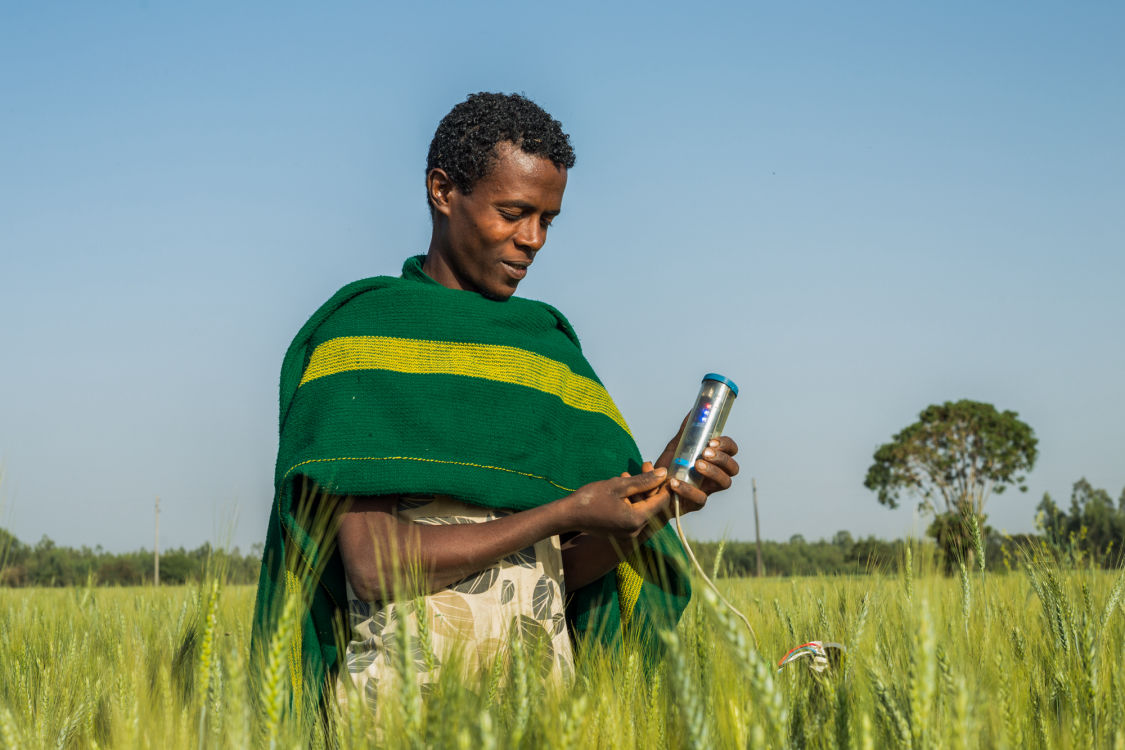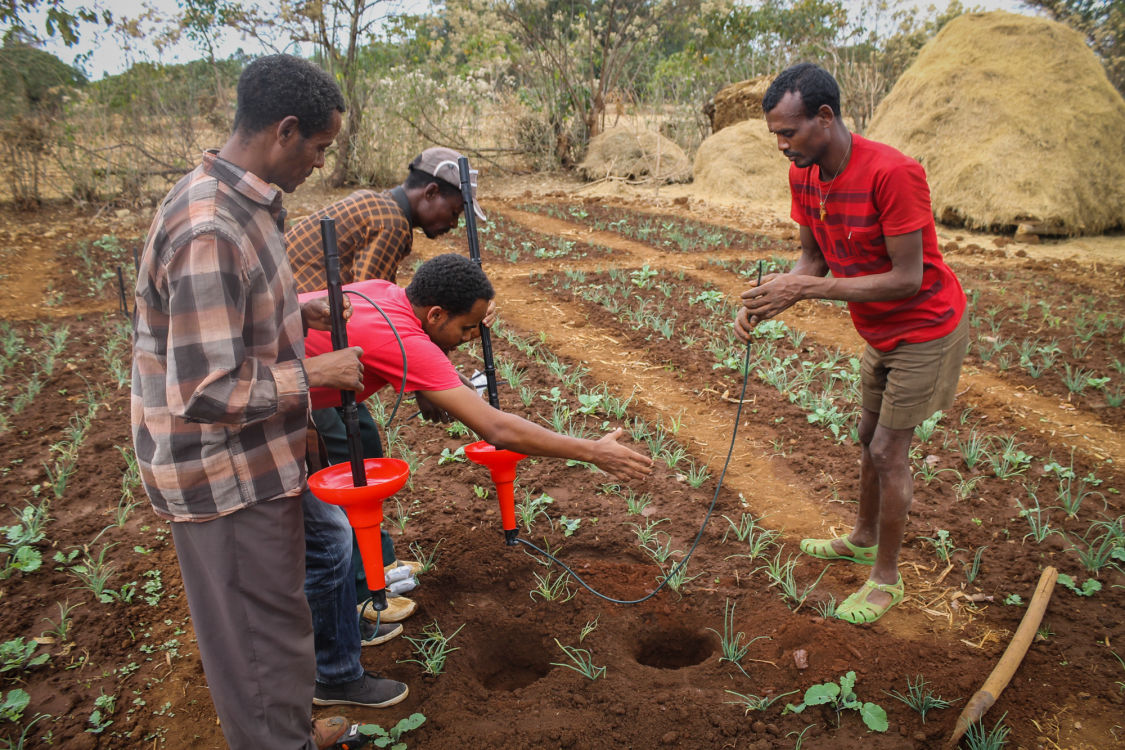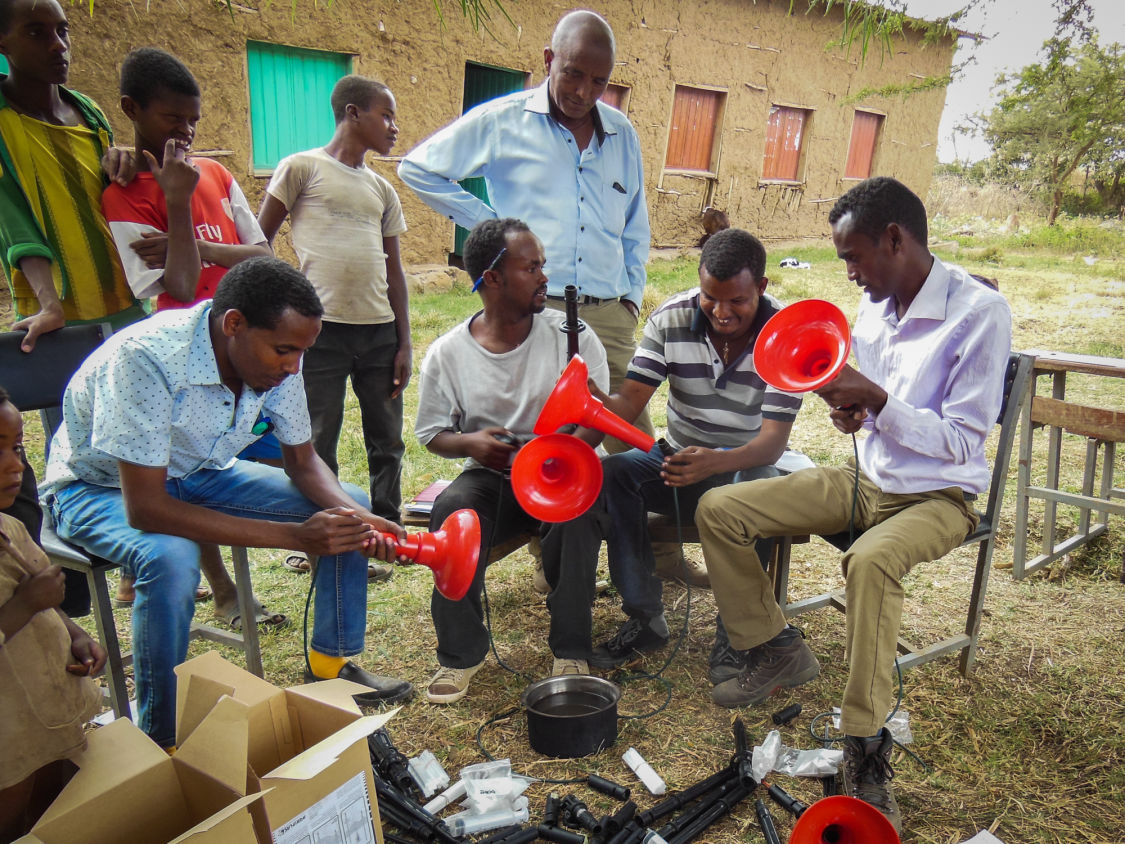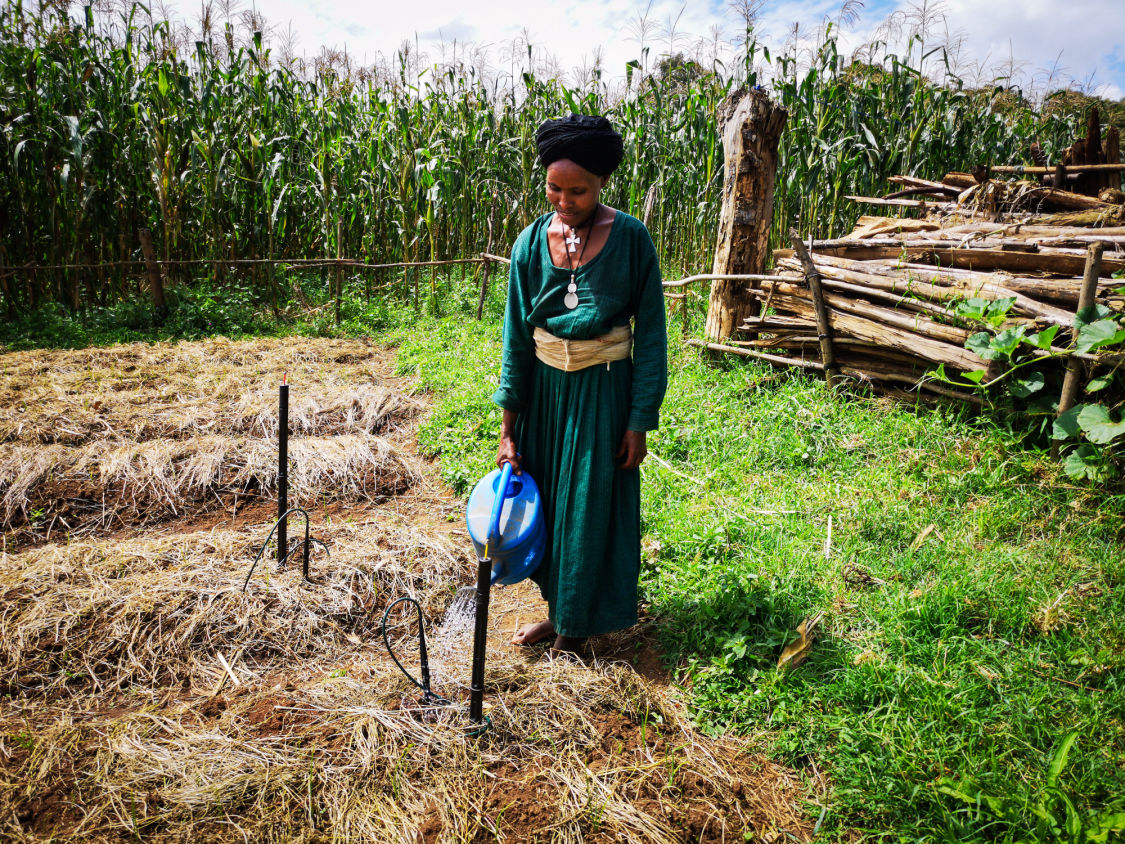First contact
Back in 2014, Petra Schmitter from the (IWMI) was starting a major new project in Ethiopia and began a search for tools to help farmers save water. There were many choices, but Petra was specifically looking for tools that would capture the imagination of smallholder farmers.
At the time that she made contact with the VIA, we had no Chameleon sensors to spare, so she started with 100 pairs of Wetting Front Detectors.

Maheder Haileselassie / IWMI
A year later we were fascinated to read Petra’s first report. Pilot trials showed that farmers had saved 40% of the irrigation water for potatoes and 24% for onions. Other trials showed they could save $50-150 per ha of fuel for pumps, reduce labour by up to 2.5 days per ha per season and increase water productivity by 20-58%.
This was encouraging, because VIA tools cannot just be handed out to farmers as ‘the solution’. There is a learning process where farmers decide how they are going to deploy the equipment and respond to the pop-up flag of the Wetting front Detector and the Chameleon colours. Petra and her IWMI team had clearly done an outstanding job in engaging with farmers.



